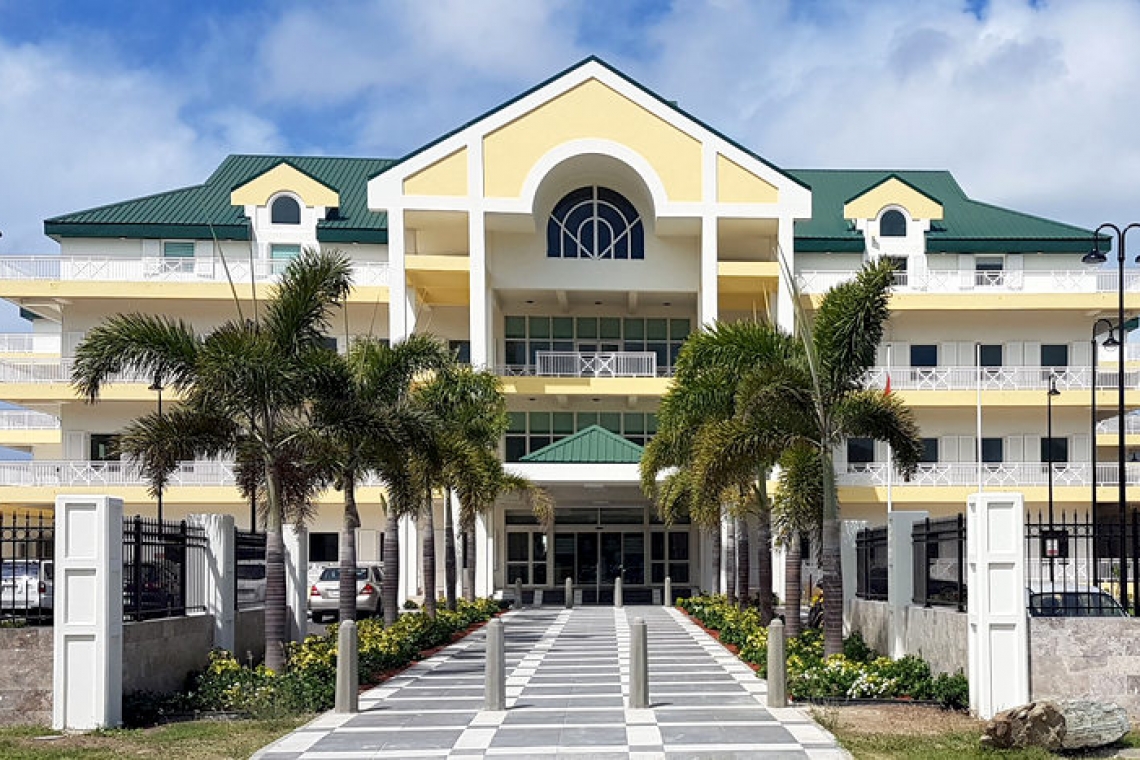WASHINGTON--Assuming that financing by the Dutch government is provided as loans, the national debt of St. Maarten will increase to 91 per cent of the gross domestic product (GDP).
This would mean an increase of about 38 per cent of the GDP compared to projections prior to the COVID-19 crisis. In Curaçao, the debt-to-GDP ratio will rise to close to 90 per cent of GDP, constituting an increase of about 33 per cent of GDP. Generally, the International Monetary Fund (IMF) advises to keep the debt-to-GDP ratio of small island states at a 40 per cent maximum.
The Western Hemisphere Department of the IMF stated this in an April 6 confidential document to IMF management, the finance ministers of Curaçao and St. Maarten and management of the Central Bank of Curaçao and St. Maarten (CBCS).
If the St. Maarten border closure stays in effect until the end of July with a gradual recovery of tourism starting in the third quarter of this year, the 2020 fiscal financing needs for the country are estimated at 27 per cent of GDP.
The COVID-19 pandemic is inflicting major economic damage in Curaçao and St. Maarten. Border closures since mid-March followed by total lockdowns to prevent spread of the virus have led to a halt of economic activity in both countries.
“The magnitude of the recession will depend on the duration of border closures and lockdowns as well as the speed of subsequent global demand for tourism, particularly in the more tourism-dependent St. Maarten. The recession is estimated to be in double digits even under conservative assumptions,” the Western Hemisphere Department stated.
The halt of economic activity poses significant immediate financing needs, given low buffers in all sectors and high pre-existing vulnerabilities such as an incomplete recovery from 2017 hurricanes in St. Maarten and a protracted recession in Curaçao. The balance of payments financing gap of the monetary union is about 17 per cent of GDP this year.
“Unless financing is promptly secured, coping with impact of COVID-19 will be very difficult. Assuming that stay-over arrivals in the third and fourth quarter of this year recover to 25 and 75 per cent [respectively – Ed.], of their 2019 levels, annual tourism flows would drop by about 50 per cent relative to 2019, inflicting major losses in the tourism sectors.”
According to the Western Hemisphere Department, the situation is aggravated by the lockdowns necessary to stop the spread of the virus, which depresses activity in all other sectors. “This scenario leads to a downward revision of projected GDP growth by 15 and 18 points relative to the pre-COVID projections even under the assumption that the fiscal financing needs to support the economy are covered.
“The growth outlook is subject to significant uncertainty and downside risks including longer-than-expected border closures and lockdowns, slower recovery in global tourism demand and inability to secure financing.”
In both Curaçao and St. Maarten, the authorities’ strategy is to maintain productive capacity of the economy, avoid a drastic drop in the purchasing power of the population, and preserve public services. Measures to support the retail sector include payroll subsidies to avoid mass lay-offs, income support for the self-employed and support for small and medium-sized enterprises.
Also, the authorities are planning to support their social security systems, most notably health care, as they are likely to face large premium losses due to lower employment and higher costs.
With significant job destruction inevitable, and with layoffs already taking place, the countries want to strengthen social support to reduce economic hardship. The countries are seeking financing support from the Netherlands to avoid a major cut in public services due to the expected large loss in government revenue.
The Western Hemisphere Department estimated the loss of fiscal revenue and the costs of measures to cause a financing gap of about NAf. 1.1 billion (22 per cent of GDP) in Curaçao and NAf. 418 million (27 per cent of GDP) in St. Maarten this year. In St. Maarten, the 2020 fiscal financing gap is comprised of both a shortfall in fiscal revenue (10 per cent of GDP) and higher expenditure (17 per cent of GDP).
The Western Hemisphere Department emphasised that its views did not constitute IMF policy advice and that the projections presented were their own, not necessarily representing the views of the IMF Executive Board or IMF management. The confidential document was meant for informational purposes rather than for publication, but somehow it found its way to the media.







